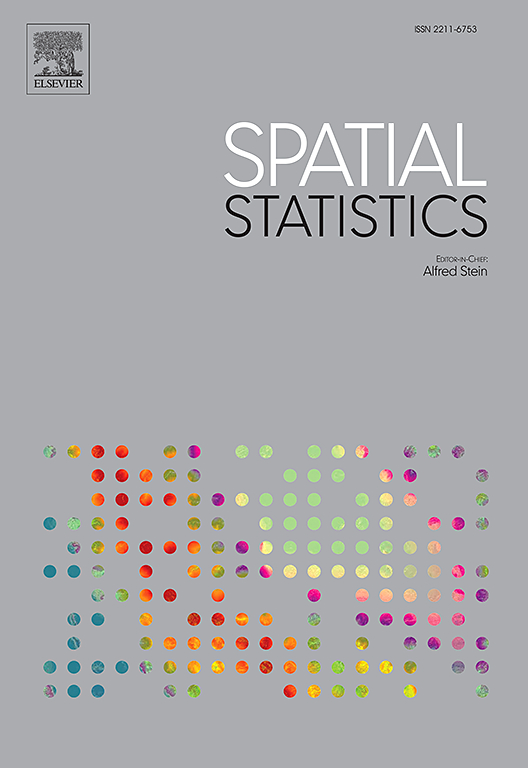多效应广义地理和时间加权回归模型的估计和推论
IF 2.5
2区 数学
Q3 GEOSCIENCES, MULTIDISCIPLINARY
引用次数: 0
摘要
地理和时间加权回归(GTWR)模型一直是探索回归关系时空异质性的有效工具。然而,它们不能有效地模拟这类遵循离散分布的响应变量。在本研究中,我们首先将响应变量的分布扩展到单参数指数分布族,并利用其单边时间加权最大似然估计方法建立广义地理和时间加权回归(GGTWR)模型。此外,我们还提出了所谓的多效应 GGTWR(MEGGTWR)模型,其中可同时包含时空变化系数、常数系数、时间变化系数和空间变化系数,以反映解释变量的不同效应。建议采用基于系数平均值的估计方法来校准 MEGGTWR 模型,并制定了基于广义似然比统计量的检验方法来识别系数类型。然后进行了模拟研究,以评估所提出的估计和推理方法的性能,并考察了解释变量之间多重共线性的影响。结果表明,MEGGTWR 模型的估计方法能准确估计各类系数,检验方法的 I 型误差有效,功率令人满意。最后,利用提出的模型及其估计和推理方法分析了儿童手足口病病例与气候因素之间的关系,发现了一些有趣的时空规律。本文章由计算机程序翻译,如有差异,请以英文原文为准。
Estimation and inference of multi-effect generalized geographically and temporally weighted regression models
Geographically and temporally weighted regression (GTWR) models have been an effective tool for exploring spatiotemporal heterogeneity of regression relationships. However, they cannot effectively model such response variables that follows discrete distributions. In this study, we first extend the distributions of response variables to one-parameter exponential family of distributions and formulate generalized geographically and temporally weighted regression (GGTWR) models with their unilaterally temporally weighted maximum likelihood estimation method. Furthermore, we propose so-called multi-effect GGTWR (MEGGTWR) models in which spatiotemporally varying, constant, temporally varying, and spatially varying coefficients may simultaneously be included to reflect different effects of explanatory variables. A coefficient-average-based estimation method is suggested to calibrate MEGGTWR models and a generalized likelihood ratio statistic based test is formulated to identify the types of coefficients. Simulation studies are then conducted to assess the performance of the proposed estimation and inference methods with the impact of multicollinearity among explanatory variables also examined. The results show that the estimation method for MEGGTWR models can accurately estimate various types of coefficients and the test method is of valid type error and satisfactory power. Finally, the relationship between childhood hand, foot, and mouth disease cases and climate factors is analyzed by the proposed models with their estimation and inference methods and some interesting spatiotemporal patterns are uncovered.
求助全文
通过发布文献求助,成功后即可免费获取论文全文。
去求助
来源期刊

Spatial Statistics
GEOSCIENCES, MULTIDISCIPLINARY-MATHEMATICS, INTERDISCIPLINARY APPLICATIONS
CiteScore
4.00
自引率
21.70%
发文量
89
审稿时长
55 days
期刊介绍:
Spatial Statistics publishes articles on the theory and application of spatial and spatio-temporal statistics. It favours manuscripts that present theory generated by new applications, or in which new theory is applied to an important practical case. A purely theoretical study will only rarely be accepted. Pure case studies without methodological development are not acceptable for publication.
Spatial statistics concerns the quantitative analysis of spatial and spatio-temporal data, including their statistical dependencies, accuracy and uncertainties. Methodology for spatial statistics is typically found in probability theory, stochastic modelling and mathematical statistics as well as in information science. Spatial statistics is used in mapping, assessing spatial data quality, sampling design optimisation, modelling of dependence structures, and drawing of valid inference from a limited set of spatio-temporal data.
 求助内容:
求助内容: 应助结果提醒方式:
应助结果提醒方式:


